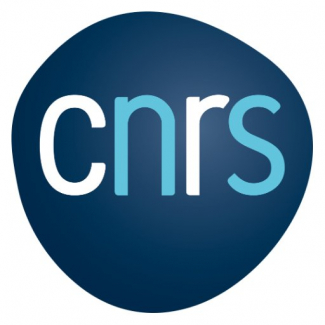Double Networks: Hybrid Hydrogels with Clustered Silica
Résumé
Model hybrid hydrogels reinforced by silica nanoparticles were designed by polymerizing and cross-linking the gels in situ. The polymer−particle interactions were tuned by using either poly(dimethylacrylamide) (PDMA), which adsorbs on silica, or poly(acrylamide) (PAAm), which does not. Besides, the dispersion state of silica nanoparticles was tuned from welldispersed to aggregated by changing the pH from 9, which ensures repulsive interactions between nanoparticles and good dispersion state, to about 6, which affects the surface chemistry of silica and promotes aggregation. The dispersion states were characterized by small-angle X-ray scattering (SAXS). The mechanical behavior of hybrid gels with aggregated nanoparticles is markedly different from those where silica is well-dispersed within the matrix. PDMA-based hybrid gels display pronounced nonlinear behavior, somehow similar to those observed in filled elastomers. The nonlinearities are even more pronounced in gels with aggregated particles, with strong strain stiffening along with large dissipation. For those samples, reinforcement can be attributed to the combination of both reversible interactions between PDMA and silica nanoparticles, which provide strain stiffening and recovery, and the response of the silica network. Recovery processes observed in hybrid gels with dispersed particles are preserved when silica particles are aggregated, but the characteristic time needed to fully recover the mechanical response is extended from a few seconds to several hours. In PAAm-based hybrid gels with aggregated silica nanoparticles, no recovery processes are observed. This implies that the properties, namely, the very high linear tensile modulus and high dissipated energy, are driven by the rigid network formed by nanoparticle aggregation, which provides high dissipative capabilities, especially when compared to PAAm-based hybrid gels with dispersed silica, that remain soft and fragile. These gels exhibit a quite inhomogeneous structure, with permanent damage under elongation. The nonlinear dynamical behavior of hybrid gels was investigated by large amplitude oscillatory shear (LAOS) experiments. While unfilled gels show no nonlinearity up to very large strain amplitude, marked nonlinear effects combining a drop in modulus (similar to the Payne effect) and strain stiffening for increasing strain amplitude are observed in PDMA-based hybrid gels, certainly due to polymer adsorption onto nanoparticles. PAAm-based hybrid gels also show nonlinearity, with a drop in modulus for increasing strain but no strain stiffening, indicating that the presence of fillers alone can induce nonlinearity in the absence of strong, reversible polymer−particle interactions. PAAm-based hybrid gels with aggregated silica show very high stiffness and high dissipative properties at the expense of stretchability, though. Also, the structure seems to be permanently damaged under stress, revealing the importance of silica−polymer interactions for permanent mechanical reinforcement. Altogether, the analysis of the nonlinear behavior indicates the importance of combining dynamic adsorption of polymer chains on silica nanoparticles with mechanical reinforcement provided by the silica network.
| Origine | Fichiers produits par l'(les) auteur(s) |
|---|



